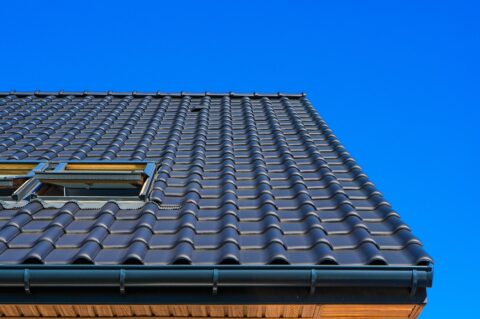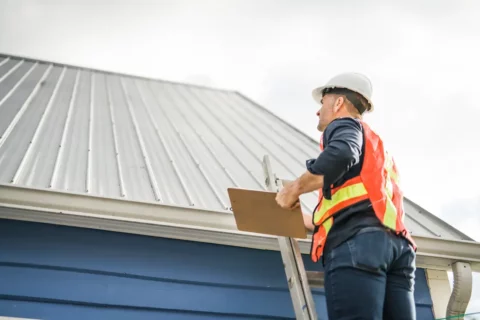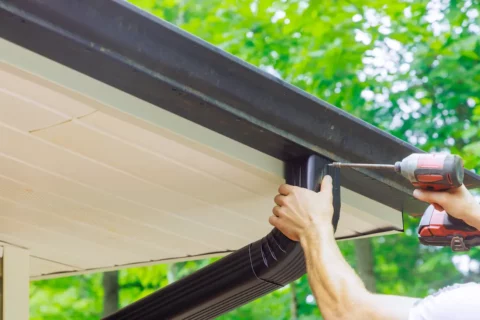
How to Spot Early Signs of Roof Leaks Before They Get Worse?
Roof leaks may seem like a small inconvenience, but they are actually troublesome. You may experience water stains on your ceiling or peeling paint on your walls that can lead to costly repairs. According to the National Roofing Contractors Association, roughly 33% of homes in the US experience a roof leak each year. That’s why it’s important to look out for signs of roof leaks early and take timely actions before they cause severe damage.
Don’t know much about detecting roof leaks? This article is for you; we are going to guide you on how to spot early signs of roof leaks and why you should do it. Let’s start!
Signs of Roof Leaks
Roof leaks aren’t always going to be water pooling around your home. Instead, they often start with subtle warning signs that you should never overlook, such as:
- Water Spots on Ceiling: Are you noticing the sudden appearance of yellowish or deep brown spots on your ceiling? It must be one of the signs of roof leaks, possibly due to damaged shingles or loose flashing, that need immediate attention.
- Peeling Paint: Sometimes, your roof’s drainage system fails, leading to water accumulation around windows, baseboards, and corners. Then, you may experience issues like bubbling or peeling paint, wood swelling, and weakening support structures, all of which point toward a potential roof leak.
- Musty Odor: Imagine entering your home, and you are suddenly greeted with a musty, earthy odor that makes the whole vibe unpleasant. Well, it’s a common sign of roof leaks and indicates that water is still trapped in the attic. If left untreated, this buildup can cause mold and mildew growth that compromise your personal well-being.
How to Spot Signs of Roof Leaks?
Now that you are aware of the common signs of roof leaks, you must be wondering how you can pinpoint the exact location or spot of the leak. If so, here’s a step-by-step guide:

Inspect Your Home
Leaks can be really sneaky! They may initially develop during snowy or rainy weather but show up way late until the damage has been done. So, the first thing you should do to find these hideous leaks is to thoroughly inspect your home. Look out for signs such as water spots on the ceiling, damaged paint, or bad odor.
Check the Attic
The attic is the area right beneath your pitched roof. If there is a leak, water can get into the attic, causing severe damage to the insulation and possibly wood warping.
Therefore, you should use flashlights or moisture meters to scrutinize the attic for signs of dampness or mold formation.
Also, pay special attention to humidity spikes, as they may indicate the presence of moisture. If it goes undetected, it can wreak havoc on your building.
Survey the Roof’s Exterior
Once you are done with the insides, move to the exterior of the room to find prominent signs of roof leaks. Check for missing or broken shingles. You must also be vigilant about gaps in flashing, as they are a major sign of water infiltration. If, unfortunately, you notice any of these things, your roof has potential leaks that require immediate treatment.
Thoroughly Check the Gutters
These play an important role in directing water away from your property, but if they are clogged, they can contribute to leaks. To check and clean your gutters, you can follow the given tips:
- Use a ladder to reach the top area and check if the gutters are clogged with debris like leaves and dirt. Clean them regularly using a small scoop or your hands (don’t forget to wear gloves to avoid injuries).
- Next, use a garden hose to wash away the remaining debris and make sure the water flows away properly. If water pools or overflows, it’s a red flag that there’s something wrong with the downspouts.
Replicate Rainfall with a Garden Hose
If your whole mission of finding signs of roof leaks ends up without any conclusion, you should take the garden hose and simulate rainfall.
Begin spraying your roof slowly, typically one section at a time. Don’t swiftly move from one place to another. Rather, spend a couple of minutes on each part of the roof to saturate it properly.
Meanwhile, send someone inside the home, particularly where you first noticed the leak, so they can help you pinpoint the exact location.
Call a Professional
While spotting the roof leaks yourself may seem like an easy task, it’s not, especially when you are trying to analyze hard-to-reach areas. You may slip and fall, leading to a severe injury. That’s why it’s a good idea to call a professional roofer for a thorough inspection. They have advanced tools such as infrared moisture detectors and roof inspection drones that help them diagnose the exact location of leaks without compromising on safety.
Benefits of Identifying Signs of Roof Leaks
Finding signs of roof leaks timely can save you a lot of bucks on costly repairs, along with offering benefits such as:
- Prevent Water Damage: Early detection of water leaks can prevent water damage to ceilings and walls and help maintain the structural integrity of your home so everyone inside stays safe.
- Increase Home Value: Another benefit of identifying roof leaks promptly is that it increases the home’s value. How? Potential buyers seek homes that are properly maintained, and a leakproof roof indicates that the property is in good condition. This helps you get high quotes for your home, which ultimately increases the overall ROI.
FAQs
What should I do if I find a roof leak?
If you find a leak in the roof, place a bucket to catch dripping water and remove all valuables from the affected area. You should also temporarily seal the leak using tape and call a professional for repairs.
How can I prevent roof leaks in the future?
To prevent roof leaks in the future, you should do regular roof inspections, clean gutters, check the flashing, and repair all damages promptly to extend the roof’s lifespan.
Can small leaks cause water damage?
Yes, even a small leak, if unchecked, can result in water damage, mold growth, and structural weakening.
Conclusion
It’s mandatory to keep an eye on signs of roof leaks to ensure your home and belongings stay safe from damage. Looking for a reliable roofer to handle all your roof leaks and damage issues? 303 Roofer is the one-stop solution.
Our team understands the Colorado climate weather patterns and the wear and tear they cause to your roof throughout the year. Get in touch with us today for a thorough inspection, expert repairs, and long-lasting roofing solutions!



